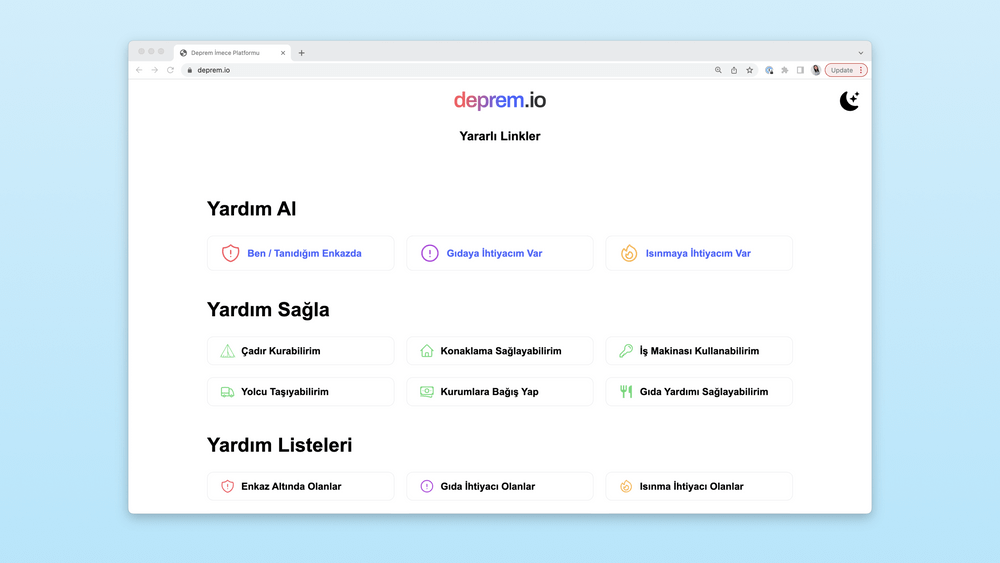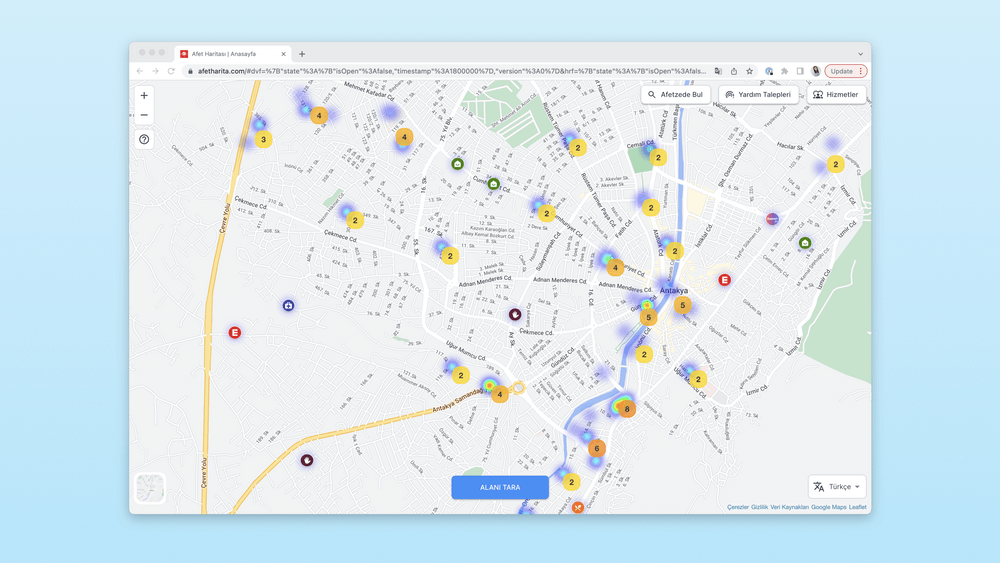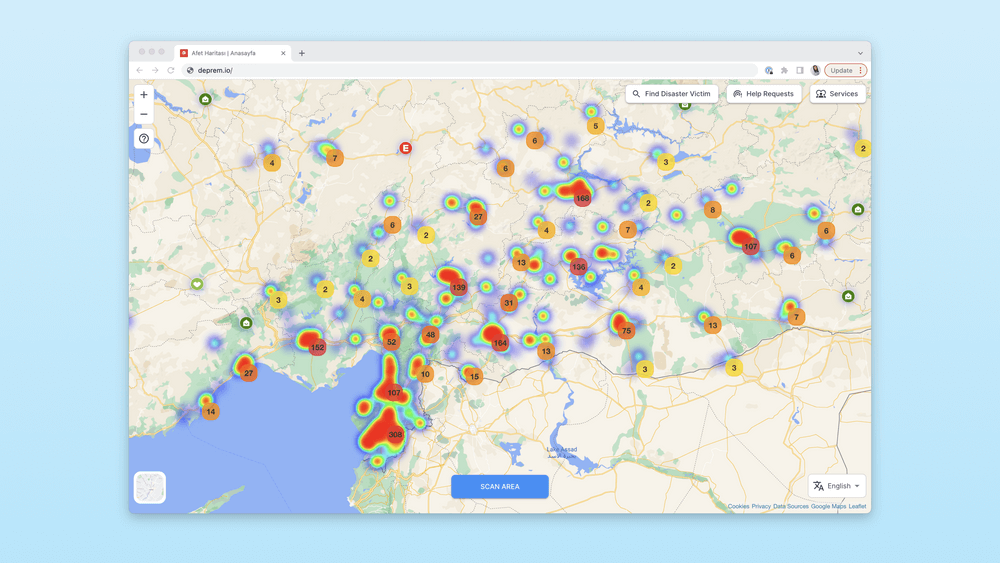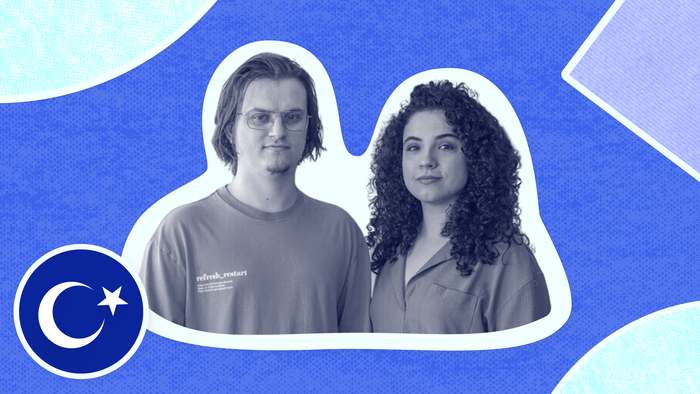It was Sunday night in Toronto when the first earthquake struck some 5,500 miles away. The magnitude 7.8 quake, centered 20 miles outside the city of Gaziantep, Turkey was the strongest earthquake to hit the region in more than 80 years. Enes Ozgor, a Turkish-born interface designer living in Toronto, heard the news before he went to bed. “It was far from my home city, from our relatives and friends,” he recalled. “No one was hurt at first. We were just a little upset by it, and talked about the earthquake in Turkey in 1999, which was closer to me when I was a kid.” Then Enes went to bed.
Disaster in Turkey
By the time he woke up the next morning, a second quake of magnitude 7.7 had struck roughly 60 miles from the first epicenter. By then the devastation was clear: Cities had been leveled, and reported fatalities would soon climb into the tens of thousands.
Enes logged on to Twitter and took in first-hand accounts of the horror in his homeland. People were tweeting photos and videos accompanied by cries for help. “There were hundreds of tweets like this, ‘We are here, three people, I’m hurt, please save us.’ and so on,” Enes said. “Then it hit me like a brick wall: This is not right, isn't there anything useful out there to help?”
Standing Up a Simple App for Direct Relief
The quakes had come in quick succession, huge and unexpected. Collapsed buildings blocked key roads in and out of affected areas, making it near-impossible for rescue teams to reach victims in time to help. Enes’ first thought was to build an app to pass victims’ data along to disaster officials. But that would take too long. The situation required something more direct.
“There will be people who can help, because not all the buildings have collapsed, and not everyone will have emergencies. Some people have food, some people have extra blankets or clothing," he remembered thinking. “Some people will have cars nearby, so maybe they can deliver supplies.”
These thoughts took shape as the interface for a simple web app: A page with two buttons, one to request help and another to offer it. The buttons would link to simple form pages for collecting critical data. Victims would enter their location and a first name so rescuers could call out to them on-site. Other information wasn’t critical, and would only slow things down. Volunteers offering aid would enter contact information, but also details about what they had to offer: Food, clothes, transportation, donations, or even heavy machinery to clear rubble trapping people underneath.

Drawing on his background as an interface designer experienced with Bubble, Enes sat down at his computer. Within a few hours he had built a first version of the app and sent it to friends for testing. Once the bugs were ironed out, Enes’ wife recorded a short video explaining how to use the site. They sent the clip to social media influencers and others they hoped could quickly amplify the message. Deprem.io — deprem translates to earthquake in English — went live.
When Help Goes Viral
Enes opened Google Analytics to track traffic to the app in real time. The counter hit ten visitors, then twenty. Within the first hour it was up to 2,000. “Wow. Okay. It's being used,” he recalled thinking. A designer friend in Turkey enlisted staff at his studio to help, manually updating victims’ locations, and cross-referencing data with tweets coming from similar locations on the ground. “A lot of people helped,” Enes said.

Deprem.io went viral, generating 480,000 requests to Google Maps in its first ten hours online. Enes set to work on optimizing API requests, and upgraded his personal Bubble and Google accounts to handle the quickly growing traffic.
The site drew roughly 384,000 unique visitors and 2.5 million page views in its first 24 hours. As night fell on Turkey, usage declined dramatically, so Enes replaced the home page with a “Down for Maintenance” message, and worked on more optimizations. “A lot of people then contacted us asking if we needed development help,” he said. While they didn’t need developers, Enes’ team did need funds to help offset quickly mounting hosting costs. Within a few hours, someone made contact with both Bubble and Google, and hosting credits were added to both accounts.
A Reusable Template for Rescue Efforts
Behind the scenes, the app recorded each entry so Enes could keep track of who needed aid, who was offering aid, and eventually, what kinds of assistance had been provided. Features were added to prioritize the urgency of help requests, and to link requests back to individual tweets to better track overall rescue efforts.

During roughly four days of uptime, deprem.io logged approximately 1.3 million total unique visitors accounting for 9 million page views overall. A final data export showed 70,000 logged requests for help, and roughly 7,000 offers of assistance. All data was kept private behind a login page.
The app was taken down after Enes was contacted by Turkish authorities who, for legal reasons, built a new site on the deprem domain. Enes and his team are discussing the future of their app, including ways to leverage social functionality, quickly iterate new versions tailored to specific events, and keep hosting costs down during non-emergency times. Their remarkable story shows how quickly people can leverage technology like Bubble to mobilize resources, and build something truly useful to help others, even from afar.
Build for as long as you want on the Free plan. Only upgrade when you're ready to launch.
Join Bubble






